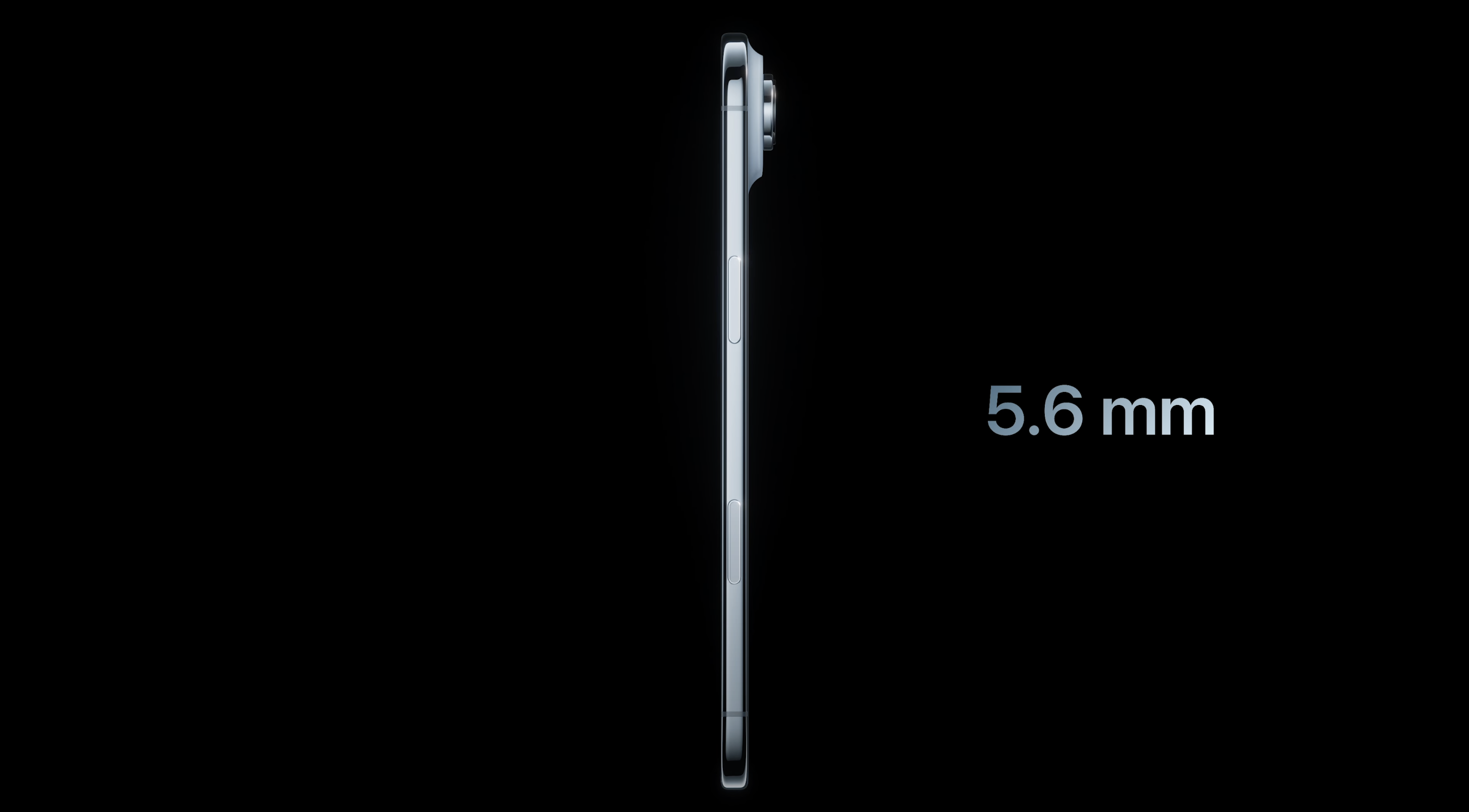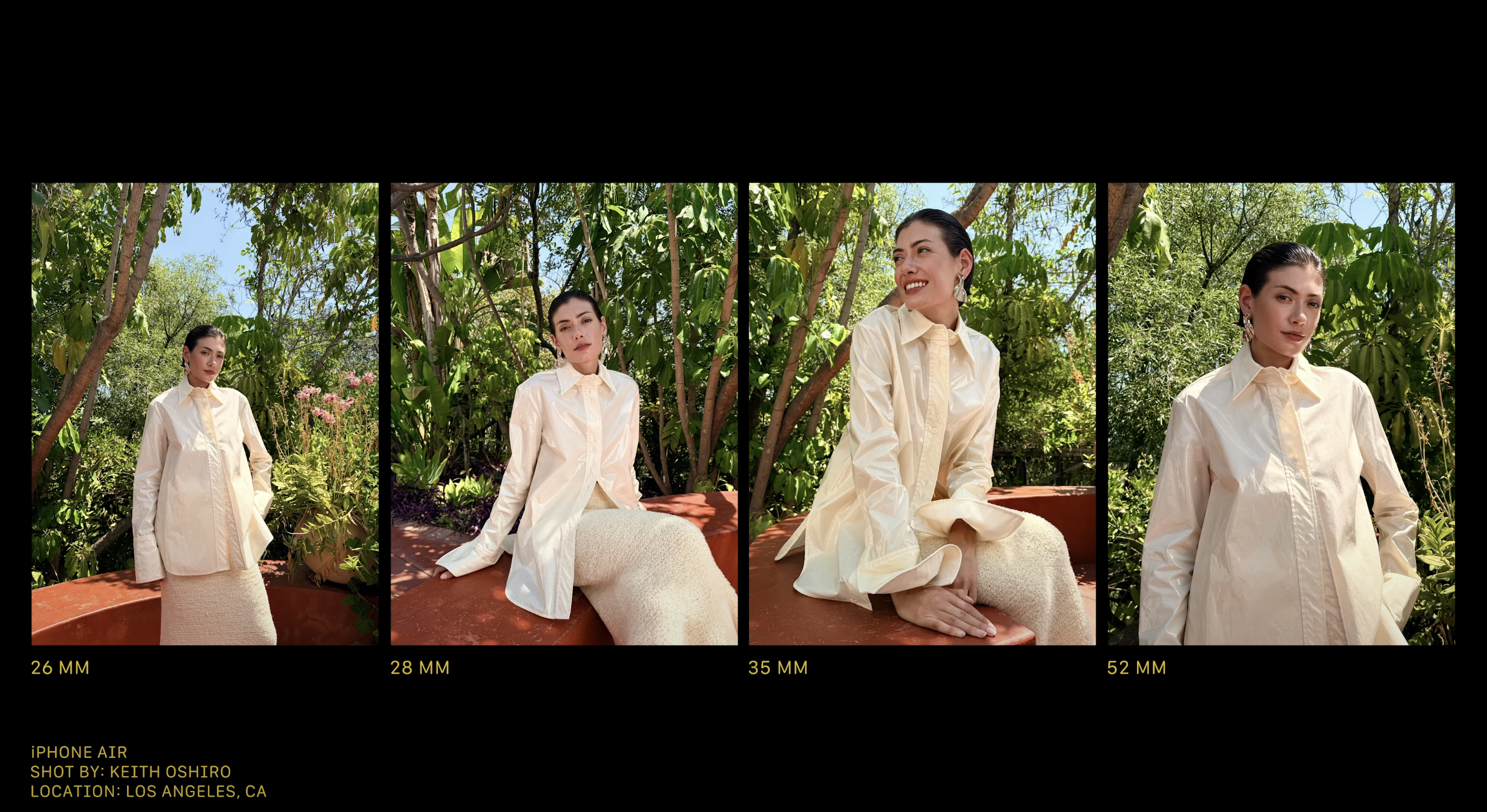Tablе of Content
The iPhone Air was first released in September 2025 and was a real engineering breakthrough. It is called the thinnest smartphone in Apple’s history. At the same time, it loses virtually nothing in terms of performance and battery life. We have prepared a review of the iPhone Air, where we discuss the advantages and disadvantages of this new product.
A Completely New iPhone Air Design
You won’t confuse the iPhone Air with other models — the difference is noticeable even visually. The body is only 5.6 mm thick, compared to 7.9 mm for the iPhone 17. However, the Air Series smartphone has a 0.2-inch larger display diagonal.
Interestingly, Apple’s current lineup includes even thinner devices: the iPad Pro 13 M4, released in 2024, is only 5.1 mm thick.
The smartphone’s frame is made of particularly durable titanium, so the phone won’t bend. A Ceramic Shield protective coating has been added to the back panel, as in the iPhone 17 Pro. Another design innovation is the camera block, which stretches across the entire width of the back panel. The Apple Silicon chip is also located in this panel. This allowed the developers to save space for the battery without compromising performance. As usual, the camera controller and action button are located on the side panels.
The display features Ceramic Shield 2, a new generation of scratch-resistant coating that is three times more durable. The iPhone Air also comes in different colors than other 2025 models: Sky Blue, Light Gold, Cloud White, and Space Black. Apple also presented new accessories — MagSafe-compatible cases in translucent colors.
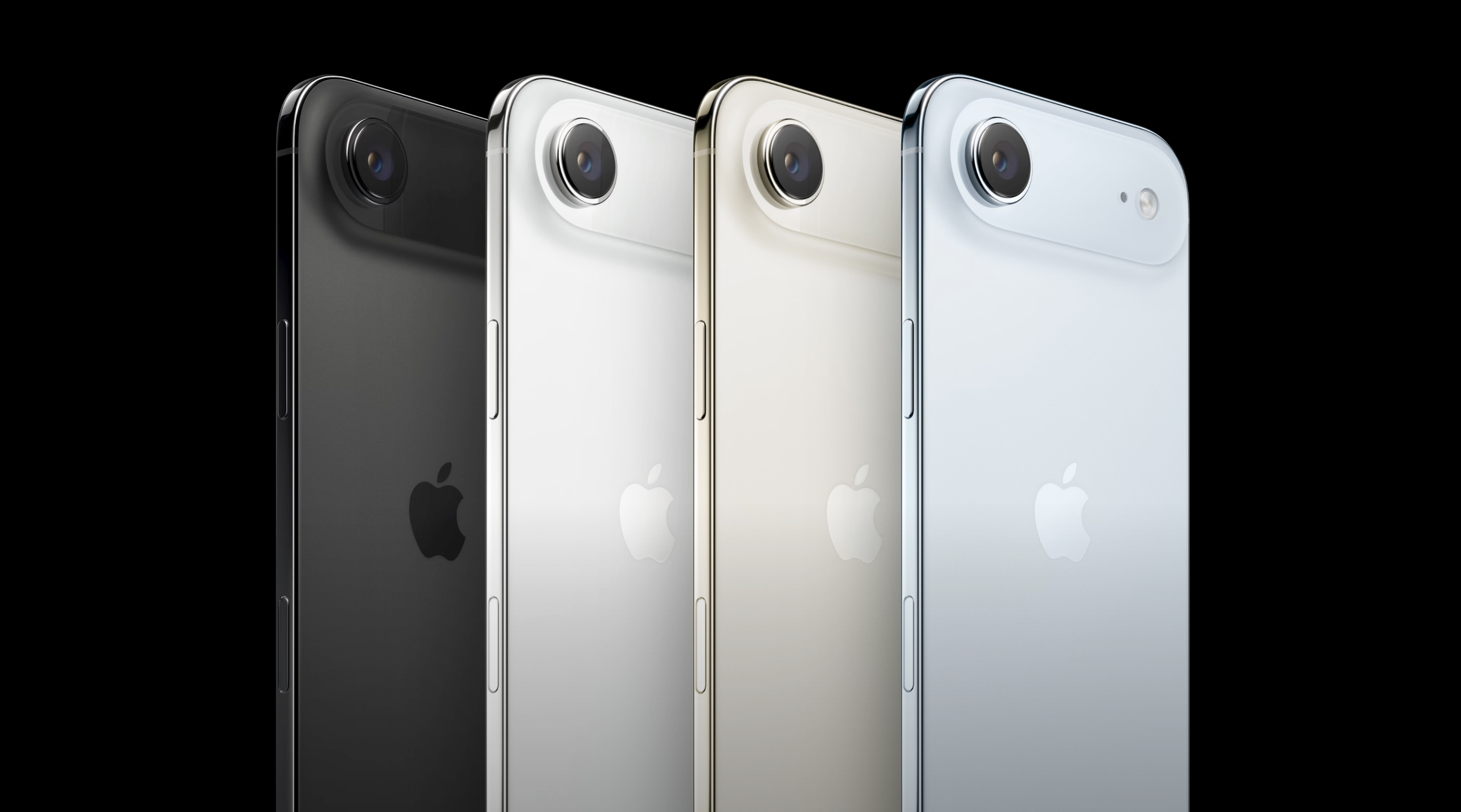
Bright Display
The iPhone Air uses a Super Retina XDR display that supports the ProMotion option. Thanks to this, the smartphone automatically adjusts the refresh rate from 1 to 120 Hz, adapting to your actions. Previously, this feature was only available in the Pro line, but in 2025 it appeared in all the brand’s new products.
Other features:
- OLED matrix;
- Dynamic Island;
- Always-On (always-on display);
- True Tone support.
A comparison of the iPhone Air vs. the iPhone 16 shows that the new model has a brighter screen. In sunlight, the peak value is 3000 nits versus 2000 in the base version of the previous generation.
New Cameras
The main sensor of the iPhone Air is represented by a 48 MP Fusion camera system. It combines the options of four lenses, shooting in high quality at different focal lengths.
Thanks to Quad-Pixel support, the phone takes good photos in the dark. And with 2x optical zoom, you can zoom in on objects twice without losing quality.
The front camera of the iPhone Air has a resolution of 18 MP and Center Stage technology. What’s new here:
- square sensor — the phone takes horizontal photos when held vertically;
- AI algorithms — the system automatically adjusts the viewing angle during group photos so that everyone fits in the frame;
- Dual Capture — this feature allows you to record video simultaneously on both cameras.
The iPhone Air’s specifications include a new photo processing pipeline. Thanks to this, the system records depth data, and you can turn a regular image into a portrait at any time using photos.
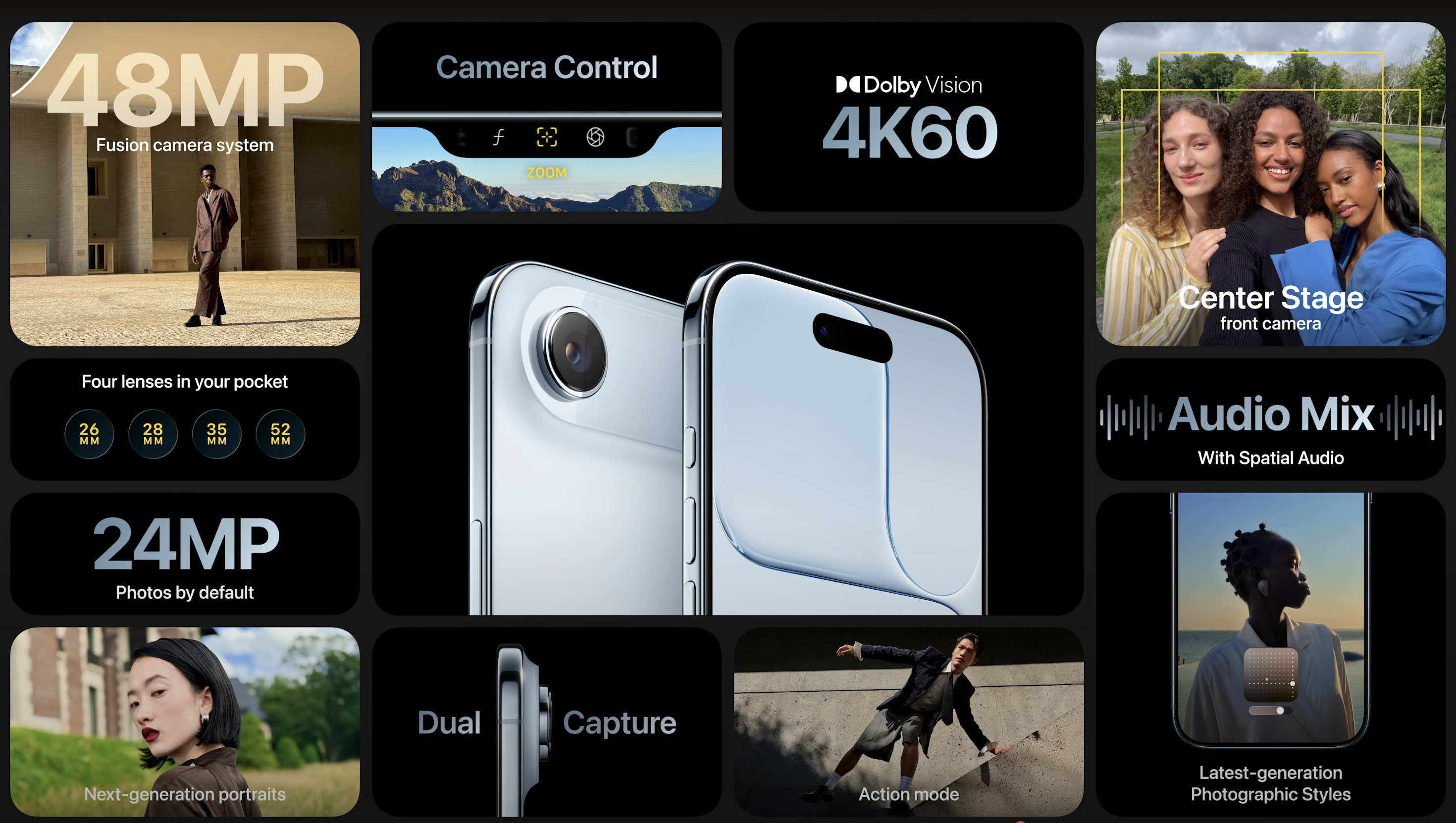
A New Level of Performance
The iPhone Air is considered Apple’s most energy-efficient smartphone. The brand new A19 Pro processor handles even professional applications and AAA games with ease, and can handle editing and graphics processing. The processor is similar to the one in the iPhone 17 Pro, but has 5 GPU cores instead of 6. Judging by reviews of the iPhone Air, the body does not overheat.
Among the innovations is the N1 chip, which provides support for updated communication protocols: Wi-Fi 7, Bluetooth 6, and Thread. AirDrop and Hotspot have also become more stable. There is also a C1X modem, which speeds up mobile networks by half. Most importantly, energy consumption has been reduced by 30%.
Battery
The iPhone Air’s battery life remains impressive — the phone can play videos for up to 27 hours. If the standard battery life isn’t enough for your needs, you can use the iPhone Air MagSafe Battery power bank to extend the battery life to 40 hours. And with software optimization, the phone uses energy efficiently.
The iPhone Air was released with a new operating system — iOS 26. It has an adaptive power consumption mode. The system analyzes your behavior throughout the day and can approximately determine when the charge will run out. Based on this data, it optimizes energy consumption so that the battery lasts until the end of the day.
No SIM Card Slot
Instead of a SIM card slot, the iPhone Air uses eSIM to save space in the body. This is a convenient technology: security is higher than with physical cards, the connection is smoother, and you can use more than eight SIM cards.
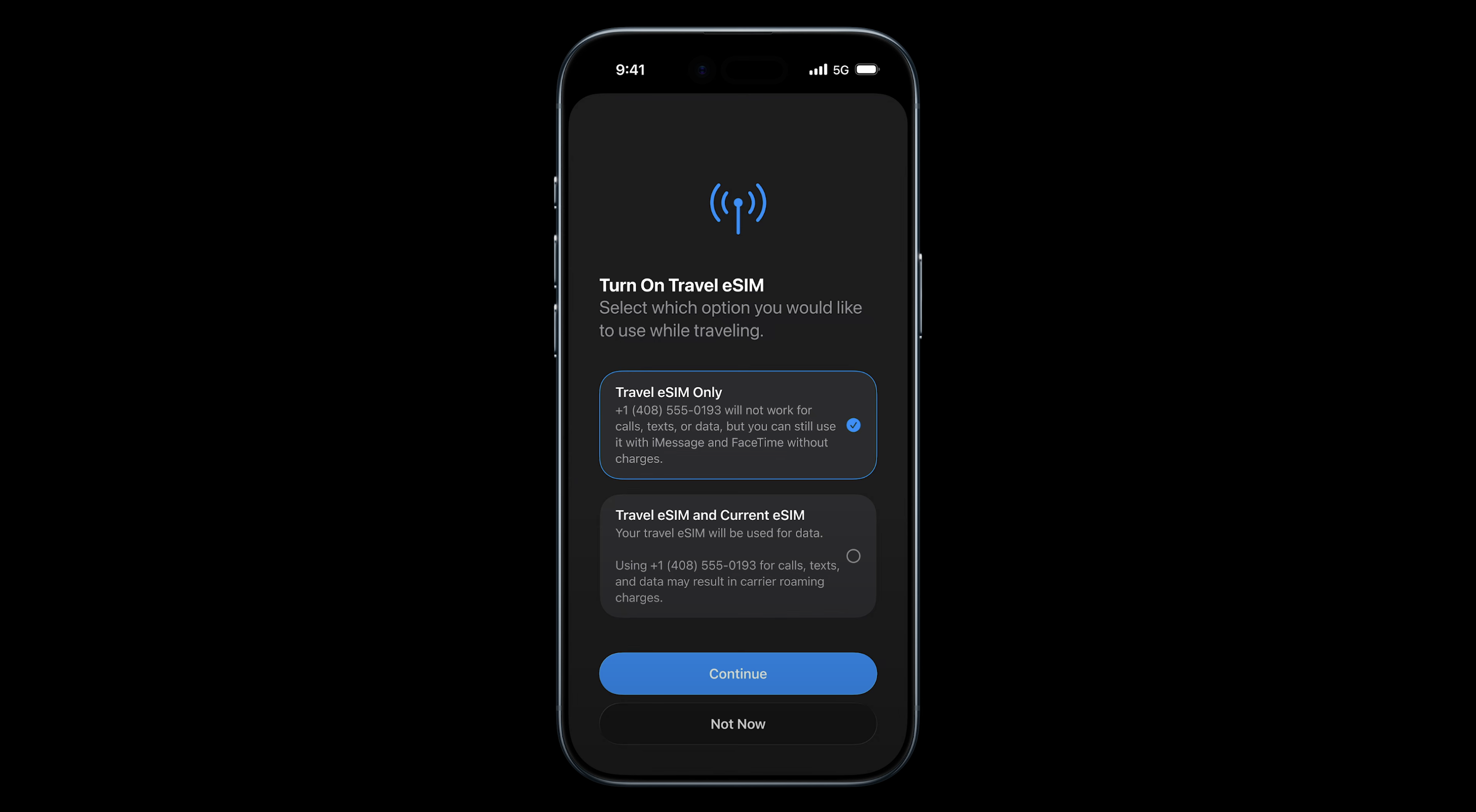
With iOS 26, setting up a digital SIM card has become even easier. By the way, this is a good option for travel and business trips — the technology is available from more than 500 operators worldwide.
Sum up
The slim body of the iPhone Air is impressive. At the same time, performance, battery life, and photo quality remain at a high level. The phone fits comfortably in your hand and feels very light and premium. The price of the iPhone Air is considered to be the golden mean between the iPhone 17 and iPhone 17 Pro.
You can personally test the camera, evaluate the display and ergonomics — all the latest models are available for public viewing at iSpace stores in Yerevan. If you still have questions or are unsure which model to choose, consult our experts. Once you know exactly which smartphone you want, you can place your order online — delivery is available throughout Armenia.
MORE ON THE TOPIC
iPhone 17 vs. iPhone 17 Pro: a Review of the 2025 Smartphones
How to Find the Perfect Case and Screen Protector for Your iPhone: An Overview
Apple iOS 26: Top Features in the Latest Update
Using Your iPhone for Studying: 7 Life Hacks for School and College Students
Subscribe to the newsletter and be the first to know about new promotions and special offers

